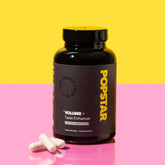The concept of the “Self Loving Sex Position” highlights a solo-focused approach to pleasure and sexual satisfaction. Traditionally, conversations about men’s sexual health often revolve around partnered intimacy; however, self-pleasure is an equally valuable avenue for exploration, stress relief, and overall sexual well-being. This article delves into the nuances of the Self Loving Sex Position, exploring techniques, potential health benefits, and addressing common questions. With a balanced blend of technical insights and reader engagement, our goal is to empower you with knowledge that can help improve your sexual wellness in a meaningful, positive way.
Table of Contents
- What is the Self Loving Sex Position?
- Why is Self-Love Important for Men’s Sexual Health?
- Techniques and Variations of the Self Loving Sex Position
- Health Benefits and Common Misconceptions
- Frequently Asked Questions (FAQs)
- References
What is the Self Loving Sex Position?
The term “Self Loving Sex Position” refers to a specific posture or arrangement of the body during solo sexual stimulation that aims to reduce unnecessary strain, maximize pleasure, and promote mindful exploration of one’s own body. Essentially, it’s a technique for men to enhance their masturbation experience through intentional positioning, with a focus on relaxation, comfort, and heightened sensation.
Although masturbation can be performed in nearly any posture—lying down, standing, or sitting—the Self Loving Sex Position encourages a strategic approach. It often involves lying on one’s back or sides, with supportive measures (like cushions or bolsters) under the lower back, knees, or arms to prevent muscle tension. The goal is to free your mind from discomfort, enabling more significant focus on pleasurable sensations.
Historically, masturbation has been misunderstood or stigmatized, making it a hushed topic. Modern men’s health advocacy, however, acknowledges the psychological, emotional, and physical benefits of self-pleasure, encouraging individuals to embrace their sexual well-being. Several factors influence the appeal and comfort of the Self Loving Sex Position:
- Physical Ease: Ensuring the body is adequately supported can help prevent strains in the neck, back, or wrists.
- Enhanced Sensation: With a stable posture, men can direct their focus to the pleasure signals the body provides.
- Mind-Body Connection: Self-love practices can foster mindfulness, reduce stress, and encourage a sense of sexual self-awareness.
- Privacy and Control: Men can decide the pacing, depth of sensation, and environment that suits them best.
Ultimately, the Self Loving Sex Position aligns with a broader shift in men’s sexual wellness conversations—one that encourages proactively exploring desires, sensations, and preferences outside of partnered situations.
Why is Self-Love Important for Men’s Sexual Health?
Self-care and self-love are growing areas of interest in men’s health, encompassing mental, emotional, and physical dimensions. When focusing on men’s sexual health, self-love involves recognizing one’s own needs, understanding sexual responses, and appreciating personal boundaries. By intentionally investing in solo pleasure, men can experience multiple advantages:
- Reduced Performance Anxiety: In private settings, worries about “performance” are lessened, allowing individuals to fine-tune personal preferences before sharing them with a partner.
- Heightened Erotic Awareness: Self-love encourages men to explore what feels good, evolving a stronger sense of personal anatomy and pleasure zones.
- Stress Relief and Mood Enhancement: Masturbation can trigger the release of endorphins, the body’s feel-good chemicals, helping to relieve stress and enhance overall mood.
- Stronger Pelvic Floor Muscle Control: Solo stimulation can allow for exercises that strengthen pelvic floor muscles (such as Kegels), leading to better sexual performance and bladder control.
- Building Self-Confidence: Exploring your own sexuality can lay the foundation for increased self-assurance in partnered intimacy, promoting open communication about likes, dislikes, and boundaries.
From an emotional standpoint, self-love involves cultivating a positive body image and self-perception. Men often face cultural norms that discourage open conversations about body positivity, but embracing self-love practices helps dismantle these stigmas. Emphasizing acceptance, understanding, and celebration of one’s body can contribute to more fulfilling solo and partnered sexual experiences.
Furthermore, self-loving is not only limited to manual stimulation. It can integrate mindful techniques such as breathwork and guided relaxation. Many men find that combining a relaxed, supportive posture with slow, measured breathing enhances physical sensations, thereby enriching overall pleasure. This mindfulness component can also extend beyond sexuality, improving overall well-being by reducing tension and anxiety in daily life.
Investing time and effort into self-love and carefully choosing positions or techniques for solo sex fosters a deeper connection with the body. Such an understanding can, in turn, empower a man to communicate desires and boundaries more effectively, fostering healthier sexual partnerships. In essence, self-love can act as a foundational pillar for broader aspects of men’s health, from psychological resilience to relationship satisfaction.
Techniques and Variations of the Self Loving Sex Position
The Self Loving Sex Position can take many shapes, influenced by individual comfort, flexibility, and desired intensity. While some variations are tailored to men who prefer reclined poses, others cater to those who seek innovative ways of achieving heightened stimulation. Below are several commonly explored techniques and variations that can be adapted to suit personal preferences.
Lying Down with Support
A classic iteration involves lying on the back, placing a pillow beneath the knees or under the lower back. This slight tilt can enhance circulation to the pelvic region and help reduce lower back strain. Men can experiment with different pillow heights or rolled towels to find the perfect angle for comfort and stimulation. For some, supporting the head or neck might be beneficial, ensuring that tension does not accumulate in these areas during the session.
Side-Lying Position
This variation is generally favorable for those dealing with back or joint discomfort since it alleviates the strain on the spine. Men lie on their side with a pillow or cushion placed between the knees. This arrangement can free up the arms for exploration or added stimulation. Slowly adjusting the angle of the hips can influence how pressure is applied, leading to varied sensations throughout the session.
Seated with Back Support
Some men prefer the seated version of the Self Loving Sex Position, using a comfortable chair or couch. Placing a cushion behind the lower back can encourage better posture, reducing stress on the shoulders and neck. This posture allows the pelvis and hips to remain free for gentle thrusts or rhythmic movements, which can add an extra layer of dynamics to the stimulation. Experimentation is key: you can try leaning forward or backward, adjusting the angle until it feels intuitively right.
Hands-Free Exploration
While the Self Loving Sex Position typically involves hands-on stimulation, modern men’s health approaches recognize the potential benefits of “hands-free” methods. These can include the controlled use of sex toys specifically designed for male stimulation. Many of these devices feature suction cups or wearable designs, enabling men to situate themselves in a comfortable position and let the device provide consistent stimulation. This can free the hands to explore other erogenous zones, further enhancing the overall experience.
Incorporating Movement and Sensory Play
Variety is often a key to preventing any form of sexual routine from growing stale. Some men integrate rotation of the hips or use a fitness ball for gentle bouncing motions that can heighten excitement. Additionally, incorporating sensory elements—such as warm or cool lubricants—and alternating speeds or types of pressure can spark new sensations. Gentle edging techniques, where you actively bring yourself close to orgasm and then ease off, can prolong pleasure and intensify eventual release.
Ultimately, the art of self-loving resides in introspection—listening to how your body responds to variations in angle, pressure, and rhythm. What works best for one individual may not translate perfectly to another. Therefore, continuous experimentation, mindfulness, and respect for bodily cues can lead to refined techniques that yield maximal pleasure.
Health Benefits and Common Misconceptions
Although masturbation remains a topic often clouded by myths, scientific research and men’s health advocates have highlighted its numerous benefits. By shedding light on these findings and addressing common misconceptions, men can better understand how the Self Loving Sex Position might fit into broader health objectives.
Prostate Health
Regular ejaculation—whether through partnered sex or masturbation—has been linked in some studies to potential benefits for prostate health. While research remains ongoing, the practice of self-pleasure, especially positioned in a comfortable manner, can be a consistent and healthy outlet. Some experts maintain that frequent emptying of the prostate fluid may reduce inflammatory markers, though individual results will vary.
Stress Reduction
The release of endorphins during orgasm can significantly reduce cortisol levels—known as the stress hormone. Engaging in self-loving can thus serve as a natural stress-busting mechanism. Paired with the mindfulness angle of a supportive position, the result is often physical and emotional relaxation. This synergy is particularly critical for men facing high-pressure jobs or stress-related conditions, offering a practical way to decompress in a private setting.
Better Sleep
Insomnia and disrupted sleep patterns can adversely affect one’s quality of life. The endorphins and subsequent relaxation following masturbation often contribute to better sleep quality. Particularly if the Self Loving Sex Position is practiced before bedtime, the calming effect on the nervous system may promote more restful and deeper sleep cycles.
Anxiety Overdependence vs. Healthy Sexual Function
A common misconception suggests that habitual masturbation, especially if performed frequently, can eradicate the desire for partnered intimacy or disrupt healthy sexual functions. While over-reliance on any form of stimulation can become problematic, recognizing the difference between excessive stimulation and balanced self-care is crucial. Embracing the Self Loving Sex Position in a healthy frequency—one that feels comfortable and does not interfere with daily commitments—often supports, rather than hinders, overall sexual vitality.
Misconception: Masturbation Lowers Libido
Another misguided belief is that regular masturbation diminishes sex drive. In reality, men who practice mindful self-love frequently report greater self-awareness and body confidence, which can translate into stronger libido in partnered scenarios. That said, personal differences in hormonal fluctuations and emotional well-being can influence libido, so experiences will vary among individuals.
Potential for Guilt or Shame
Social conditioning and cultural upbringing might lead some men to internalize guilt about masturbation. It is vital to recognize that self-pleasure is a normal and healthy aspect of human sexuality. Embracing the Self Loving Sex Position can be a positive step toward dismantling shame and replacing it with a stance of self-acceptance. Should guilt persist, it may be beneficial to seek professional counseling or speaking with a men’s sexual health professional for additional support.
In conclusion, the Self Loving Sex Position—properly practiced—can deliver a broad array of mental and physical benefits. From enhancing body awareness to contributing to emotional well-being, self-loving is a valid and often enriching part of a balanced lifestyle. Understanding potential misconceptions and focusing on scientifically grounded insights can help normalize and validate personal choices around masturbation.
Frequently Asked Questions (FAQs)
What exactly makes this different from normal masturbation?
The main distinction lies in the emphasized positioning for comfort and heightened sensation. While masturbation can technically be done in any posture, the Self Loving Sex Position focuses on body alignment, support, and intentional relaxation. This approach helps reduce tension in areas like the back and neck, allowing for a more mindful, prolonged, and pleasurable experience.
Is this position suitable for men with lower back or hip pain?
Yes. Many men find relief in variations such as lying on the side or adding cushions beneath the lower back. These adjustments minimize strain on the joints and alleviate tension on the spine. It’s always recommended to listen to your body—if adjustments still cause discomfort, it may be best to consult a healthcare provider or physical therapist for personalized tips.
Can the Self Loving Sex Position improve sexual confidence?
Engaging in mindful self-pleasure often leads to increased body awareness and a better understanding of personal arousal triggers. This knowledge can foster enhanced confidence in partnered situations. Feeling certain about how your body responds allows for smoother, clearer communication about preferences, needs, and boundaries.
How often is it healthy to practice this technique?
It varies from person to person. Frequency depends on individual libido, lifestyle, and health profiles. Some men prefer daily or every-other-day sessions, while others may find once or twice a week sufficient. As long as your self-loving routine doesn’t interfere with daily activities and responsibilities—and you feel mentally and physically balanced—it is generally considered healthy.
Are there any risks of over-stimulation or desensitization?
Over-stimulation or temporary sensitivity issues could occur if a man masturbates intensely and frequently without variation. However, many men discover that consistently switching up techniques, angles, speeds, and types of touch can mitigate any risk of desensitization. If concerns persist, taking short breaks or consulting a health professional can be helpful.
What role does lubrication play in the Self Loving Sex Position?
Lubrication (lube) can significantly enhance comfort and pleasure. Too much friction might create discomfort over time, leading to potential irritation. Choosing a body-safe lubricant—water-based for sensitive skin, silicone-based for longer-lasting glide, or specialized formulas for warmth or cooling sensations—can be an excellent addition. Adjusting the quantity of lube mid-session as needed can further optimize comfort and enjoyment.
Can the Self Loving Sex Position help with premature ejaculation?
Self-pleasure, when approached mindfully, can serve as a means to learn and practice control over arousal and orgasm. By pausing or slowing down during solo sessions, men can cultivate greater awareness of their arousal states and, over time, potentially extend stamina. While not a cure-all, the techniques involved in the Self Loving Sex Position can lay the groundwork for improved ejaculatory control in partnered scenarios.
Is it okay to use sex toys or additional stimulation aids?
Absolutely. Many men incorporate male-oriented sex toys, vibrators, or strokers into the Self Loving Sex Position for varied types of stimulation. Using toys can enhance arousal by offering new sensations beyond manual techniques. Just remember to use proper lubrication and follow manufacturer instructions or best hygienic practices.
What if I’m new to exploring self-pleasure?
Being new to self-pleasure can be a time of discovery and curiosity. Start slow, experiment with gentle strokes, and explore different parts of the body. Listen to signals of comfort and pleasure, remain patient, and avoid setting performance goals. Embrace the idea of learning about your body without judgment, and over time, you’ll develop a sense of what feels enjoyable.
Will self-loving reduce my interest in partnered sex?
For most men, a healthy self-love routine does not diminish interest in partnered sex. Instead, it can help build sexual confidence and self-awareness. If you notice changes in your libido related to health issues, medications, or stress, you might consider speaking with a professional. Generally, balanced masturbation can complement, rather than replace, sexual experiences with a partner.
Can I practice the Self Loving Sex Position if I have certain medical conditions?
Men with medical conditions—such as heart problems or severe joint issues—can usually adapt by choosing supportive positions (lying on the side or placing cushions in specific areas). That said, it’s advisable to consult directly with your healthcare provider for personalized guidance, especially if physical or cardiovascular constraints exist.
Is there an age limit to enjoying self-loving?
No definitive age limit exists for practicing self-pleasure. Healthy sexual expression can continue well into older adulthood. As individuals age, they may need to adjust positions or adopt gentler approaches to accommodate changes in flexibility or stamina, but pleasure remains a personal right and can persist across one’s lifespan.
References
- Levine, S. B. (2010). Psychotherapy with men. Routledge.
- Prause, N., & Graham, C. A. (2007). Asexuality: Classification and characterization. Archives of Sexual Behavior, 36(3), 341-356.
- Brody, S. (2010). The relative health benefits of different sexual activities. Journal of Sexual Medicine, 7(suppl 5), 133-154.
- Mah, K., & Binik, Y. M. (2005). The nature of human orgasm. Archives of Sexual Behavior, 34(1), 27-52.
- Mayo Clinic Staff. (2021). Healthy Lifestyle: Sexual health. Mayo Clinic. Retrieved from www.mayoclinic.org
- Sanford, M. T., & Turner, J. W. (2020). Men’s sexual health in the modern era. Current Urology Reports, 21(12), 60.
- Laumann, E. O., Paik, A., & Rosen, R. C. (1999). Sexual dysfunction in the United States. JAMA, 281(6), 537-544.































